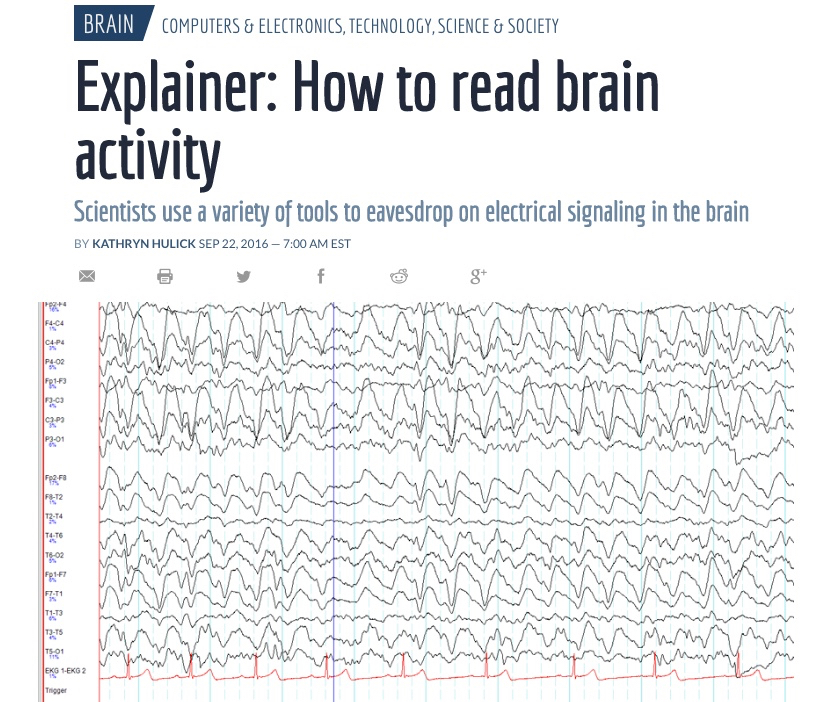My latest article was just published on Science News for Students: One day, computers may decode your dreams
Along with it, I wrote this explainer: How to read brain activity
When I set out to write this article, the only real guidance I had was to write something about the science of brainwaves, including what they are, and what scientists are learning about them. As I started researching, I found myself tugged in a couple different directions. I had research about using the mind to control robotic limbs, research about learning to read thoughts or dreams, and research about brainwaves as identifiers for cybersecurity.
Really, only the third type of research has anything to do with brainwaves, but I didn’t know that at first. I thought “brainwaves” just meant “brain activity.” But, as I learned in conversations with my sources, brainwaves are actually just a rough measurement of overall brain activity, usually visualized as the spiky readout from an EEG. In order to study mind control or read thoughts, scientists have to look deeper, at the activity of individual neurons or small groups of neurons. These signals are called action potentials.
As I was trying to put the whole article together, it was getting way too long and unwieldy. Something had to go, so I cut out the part about brainwaves and cybersecurity. It just didn’t fit with the theme of using technology to “read minds” in order to control a robotic limb or visualize thoughts. So my article about brainwaves wasn’t really about brainwaves at all! I changed the title to “The Mind Readers,” which I still think is a great title. I prefer it to what the editors wound up choosing.
Here is the story on the front page this past week:
As an aside, I’m really happy that the editors chose a person of color for the lede image. In one of my articles a while back, I had chosen an image with a person of color and the editors switched it to a picture of a white person. That was frustrating. (In this case again, incidentally, the photo used is not the one I had selected. I had picked a photo of Jan, the subject of one of the experiments discussed.)
I know Science News for Students is really focusing on representing diversity, especially in source material. In every article, we must include at least one source who is female or a minority. I think that’s a great policy to get a range of voices from the scientific community out there, even though it’s not always easy to find that minority source!
Alongside this feature article, I also wrote an explainer about reading brain activity. Most of this was in the original draft, but got broken out into a separate piece to keep the length of the main story down:


